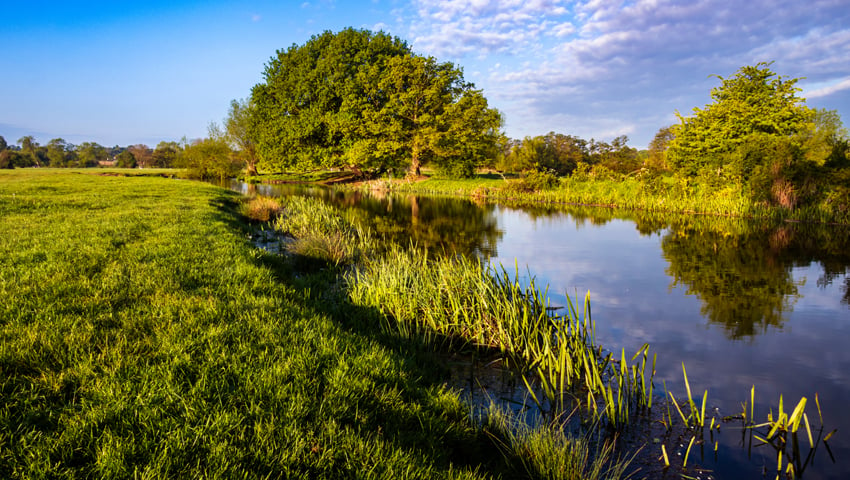The UK’s independent Land, Nature and Adapted Systems (LNAS) Advisory Group has today released its second and final report, providing a framework to define adaptation and resilience enabling investments to mobilise adaptation finance and increase the nation’s resilience to escalating climate risks.
Globally, increasingly frequent and extreme weather events and chronic risks from rising sea levels and coastal erosion threaten lives and economies. No region is immune to the mounting pressure of climate change and adaptation is essential in a 1.5°C, or warmer, world. In this report – Framework to develop a UK Green Taxonomy for adaptation and resilience – LNAS proposes a five-step approach to defining adaptation investments and establishing practical, outcome-focused criteria.
Dr Robert Bradburne, Chair of the LNAS Advisory Group, said, “Adaptation is a necessity. By clarifying what qualifies as an adaptation and resilience-enabling investment, a UK Green Taxonomy can give financial institutions the confidence and guidance needed to invest at the scale and speed these challenges demand.”
The LNAS Advisory Group, spun off from the Green Technical Advisory Group (GTAG), was tasked with advising His Majesty’s Government on how to develop adaptation and resilience within a UK Green Taxonomy.
In the absence of national adaptation goals, a well-defined, government-backed adaptation taxonomy can help identify and scale effective resilience building solutions.
Research by Impax Asset Management found that adaptation sectors collectively delivered total cumulative returns 16.3 per cent higher than the market over the past five years.
The role of the taxonomy is to help financial institutions understand physical climate risks, collaborate on resilience solutions, and identify opportunities in adaptation-enabling technologies – ranging from advanced forecasting tools, water efficient irrigation systems and parametric insurance products to nature-based solutions. To illustrate how the framework can work in practice, the report includes a ‘cities and settlements’ example, demonstrating how to address critical risks such as urban heat stress and flooding.
Ingrid Holmes, Executive Director at the Green Finance Institute and former Chair of the UK’s Green Technical Advisory Group, said, “To date no country has yet developed an adaptation taxonomy that starts with the outcome we need to see – which is a real economy adapted to the climate change that is already here and yet to come. The first principles-based approach described in this paper aims to do just that, providing a framework to support the mobilisation of finance into resilience and adaptation-focused investment, starting with the built environment.”
Five-step framework
In November 2024 the UK Government announced a consultation on the value case of a UK Green Taxonomy having identified sustainable finance as one of the five priority growth opportunities for the UK. The Land, Nature and Adapted Systems (LNAS) Advisory Group proposes a five-step framework for HMG to define and expand adaptation and resilience activities and to develop useful adaptation descriptors and metrics to guide investment into impactful adaptation projects.
Step 1 – Structure taxonomy development around a set of climate resilient systems outlined in this framework. Prioritise systems that encompass high priority risk areas from the UK Climate Change Risk Assessments.
Step 2 – Develop indicative adaptation and resilience goals for each system based on the recommendations in this framework. Goals should highlight priority vulnerabilities and hazards and their relevant timeframes to investors. These goals will guide the identification of adaptation activities and the development of activity-specific criteria.
Step 3 – Develop a more comprehensive and targeted list of economic activities for adaptation and resilience based on the recommendations in this framework. Refine the categorisation and list of adaptation activities in the EU Taxonomy and expand the list of dedicated adaptation-enabling activities, including those that address systemic barriers to adaptation.
Step 4 – Develop technical screening criteria tailored to activity types based on the recommendations in this framework. Quantitative criteria should be prioritised, but development should be pragmatic by allowing for qualitative criteria to not deter investment into well evidenced adaptation projects.
Step 5 – Develop supplementary guidance based on the recommendations in this framework to support criteria alignment. Guidance should include performing a robust climate risk assessment and selecting effective adaptation measures tailored to specific risks and assets.
Read the report, Framework to develop a UK Green Taxonomy for adaptation and resilience
